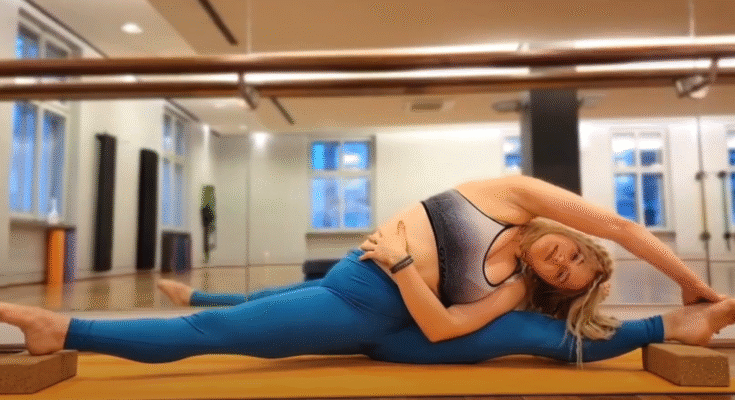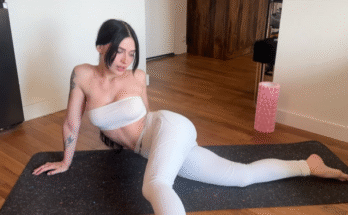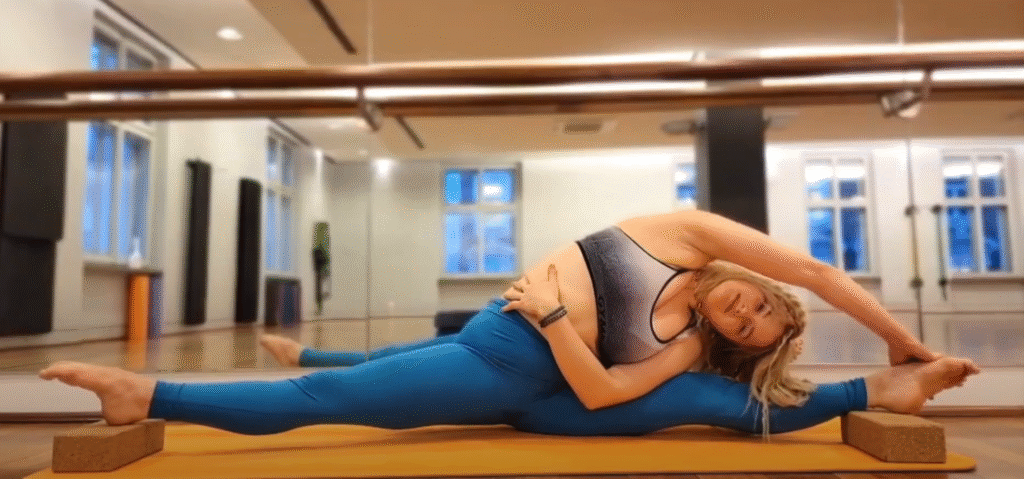
Flexibility is a beautiful expression of strength, grace, and dedication. In the world of contortion and gymnastics, few skills capture this harmony more than the splits and oversplits. These positions represent more than just the ability to extend your legs to impressive angles—they reflect control, patience, and the discipline of deep stretching. Whether you’re a dancer, gymnast, or yoga enthusiast, learning to stretch your legs safely and effectively will unlock not only mobility but also confidence and body awareness.
This guide, “Contortion, Gymnastics – STRETCH your LEGS – Splits and Oversplits,” explores how to build flexibility step by step, the science behind deep stretching, and the mindset needed to achieve your goals without injury.
Understanding Splits and Oversplits
The splits—also known as front splits and middle splits—involve extending your legs in opposite directions until they form a straight line (180 degrees). Achieving this position requires flexibility in the hamstrings, hip flexors, and adductors, as well as strength to support the stretch safely.
Oversplits, on the other hand, go beyond the flat 180-degree line. Typically practiced by advanced athletes, oversplits involve elevating one leg (on a yoga block, chair, or wall) to deepen the stretch past the standard split line—sometimes reaching 200 degrees or more. While beautiful to look at, oversplits demand careful preparation to avoid straining muscles or ligaments.
Both skills require balance: the balance between effort and surrender, between stretching and strengthening.
The Importance of a Proper Warm-Up
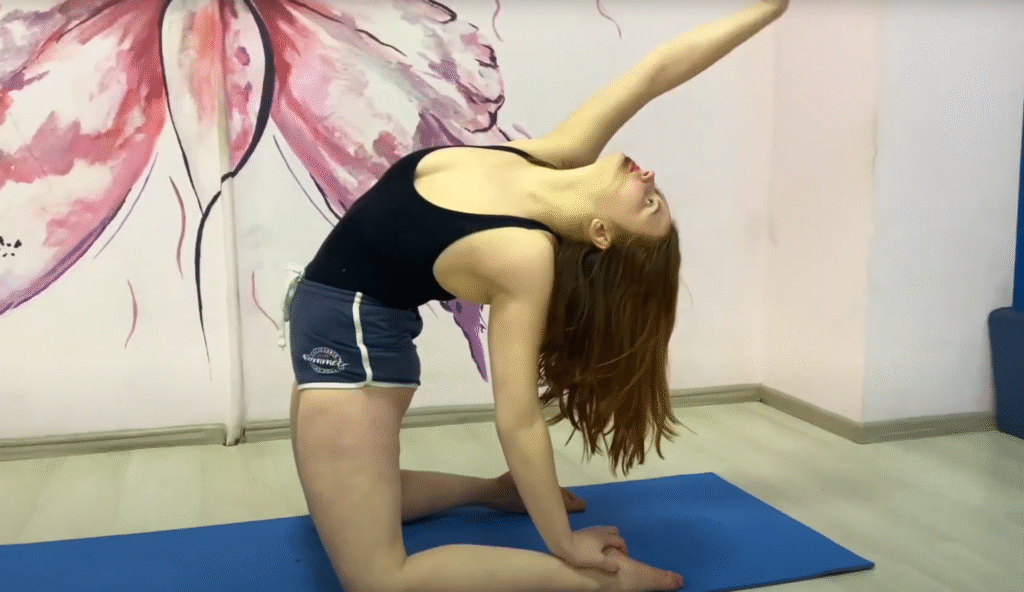
Before attempting any deep leg stretches, warming up is essential. Cold muscles are stiff and more prone to injury, while warm muscles are elastic and ready to lengthen. A 10–15 minute warm-up can make a dramatic difference in your flexibility training.
Suggested warm-up sequence:
- Light Cardio (3–5 minutes) – Jog in place, skip rope, or do jumping jacks to increase blood flow.
- Dynamic Leg Swings (1–2 minutes) – Swing each leg forward and backward, then side to side, gradually increasing range.
- Hip Circles (1 minute) – Stand tall and rotate your hips slowly in wide circles.
- Lunges (1 minute) – Step into alternating lunges to open the hips and stretch the thighs.
Remember: a proper warm-up isn’t just about movement—it’s about awakening your body awareness. Feel each joint and muscle begin to open, preparing you mentally and physically for deeper stretches.
Deep Stretch Routine for Splits
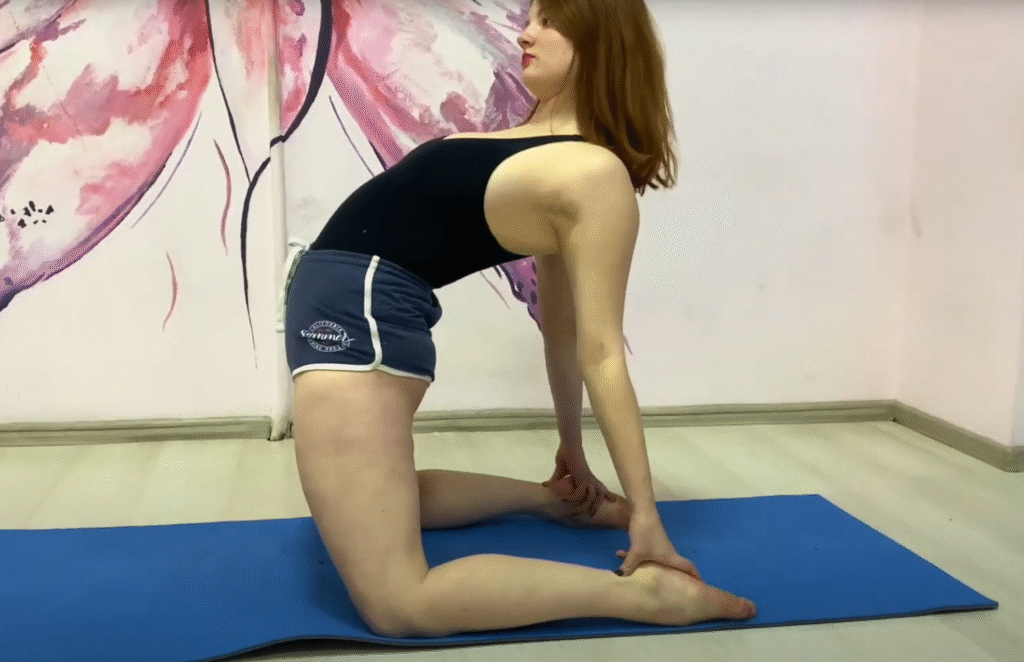
Once you’re warm, it’s time to start working on your splits flexibility. Move slowly, breathe deeply, and hold each position long enough for your body to adapt—about 30 seconds to 2 minutes per stretch.
1. Lizard Lunge (Hip Flexor Stretch)
Step your right foot forward into a deep lunge, placing both hands inside your front foot. Keep your back leg extended and your chest lifted. This position targets the hip flexors and quadriceps—key muscles for front splits.
Hold for 1–2 minutes per side. To deepen the stretch, lower your forearms to the floor.
2. Half Split (Hamstring Focus)
From a lunge, shift your hips back and straighten your front leg, flexing the foot toward you. Keep your spine long and fold gently over the leg. This stretch isolates the hamstrings and helps lengthen the back of the thigh.
Hold for 1–2 minutes on each leg.
3. Frog Pose (Inner Thigh Stretch)
Kneel on the floor, widen your knees as far as comfortable, and lower your hips toward the ground. Keep your ankles in line with your knees and your feet flexed. Rest on your forearms.
Hold for 2 minutes, breathing slowly into your hips.
4. Pigeon Pose (Hip Opener)
Bring one leg forward and fold it in front of you, keeping the other leg extended straight behind. Square your hips and relax your torso forward. This powerful pose releases tension in the glutes and outer hips—vital for achieving flat splits.
Hold for 1–3 minutes per side.
5. Front Split Practice (Hanumanasana)
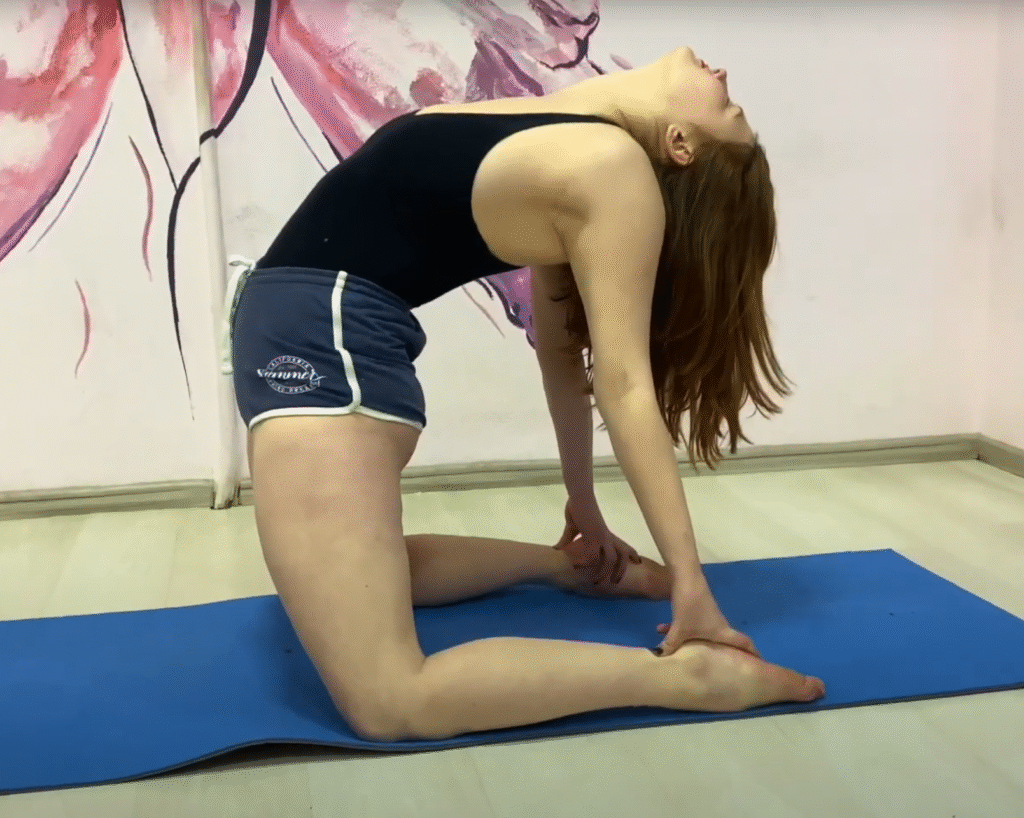
Now, from your lunge, start to slide your front leg forward and your back leg backward. Go slowly, stopping where you feel a deep but safe stretch. Support yourself with yoga blocks or your hands.
Breathe deeply, and avoid forcing yourself down. With patience and repetition, your body will open naturally.
Stay here for 1–3 minutes, then gently come out and shake out your legs.
Moving into Oversplits
Once your front splits feel comfortable and flat, you can progress into oversplits. Oversplits increase range of motion and strength in your flexibility, but they must be approached with caution.
How to begin:
- Use Support: Place your front leg on a yoga block, small step, or cushion—just a few inches high. Gradually increase the height as your flexibility improves.
- Engage Muscles: Instead of collapsing into the stretch, engage your thighs and glutes to support your hips and spine.
- Maintain Alignment: Keep your pelvis square to avoid twisting, which can stress your lower back or knees.
- Hold and Breathe: Stay for 30–60 seconds, breathing deeply. Come out slowly and switch sides.
You can also practice middle oversplits by placing both legs on blocks and letting your hips sink between them. But again—control and patience are key.
The Role of Strength in Flexibility
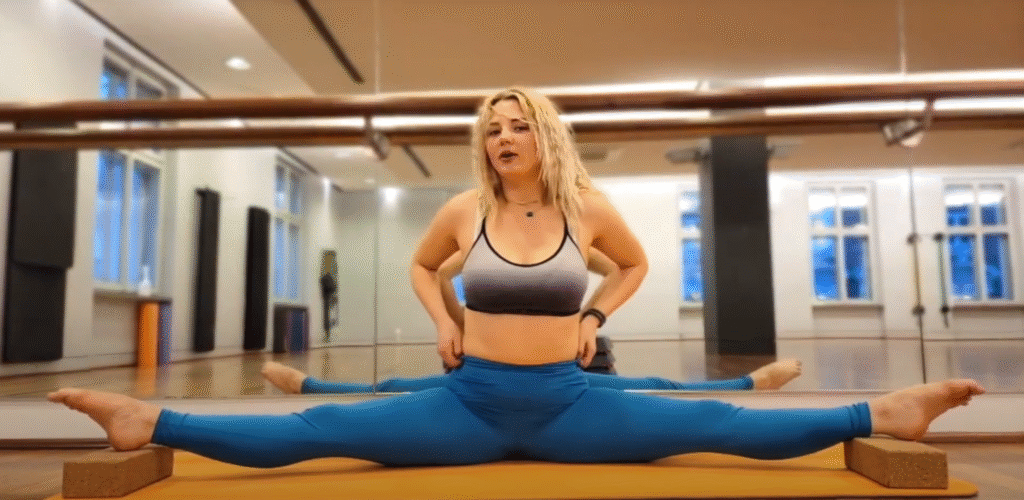
Many people believe that flexibility training is only about stretching, but strength plays an equal role. Strong muscles protect your joints, support deeper stretches, and prevent injury.
Try incorporating these strength-building exercises into your routine:
- Leg lifts: Lie on your back and lift one leg up and down slowly, engaging your core and hip flexors.
- Bridge pose: Strengthens the glutes and hamstrings while opening the hips.
- Active splits: Hold your split position while lifting your arms overhead or slightly off the ground—this trains both balance and endurance.
Balanced flexibility and strength create the control needed for contortion and gymnastics-level movements.
Breathing and Mindfulness
In contortion and gymnastics, the body follows the breath. Every deep inhale brings oxygen to tight muscles; every exhale allows release. When you hold a stretch, don’t hold your breath—it signals tension. Instead, breathe evenly and visualize your body expanding with each inhale, melting deeper with each exhale.
Mindfulness transforms stretching into meditation. As you breathe, notice sensations without judgment. Some days you’ll feel looser, others more restricted—and that’s perfectly normal. The journey toward flexibility is nonlinear, and progress happens quietly over time.
Common Mistakes to Avoid
- Forcing the Stretch: Pushing into pain can cause muscle tears. Stretch to the edge of discomfort, not beyond.
- Skipping Warm-Ups: Never attempt splits cold. Warm muscles stretch; cold muscles strain.
- Ignoring Alignment: Keep your hips square, knees facing forward, and spine neutral.
- Neglecting Recovery: Stretching deeply stresses connective tissues; give them time to rest and rebuild.
- Comparing Yourself to Others: Every body is unique. Flexibility depends on bone structure, muscle tension, and practice—not competition.
Benefits Beyond Flexibility
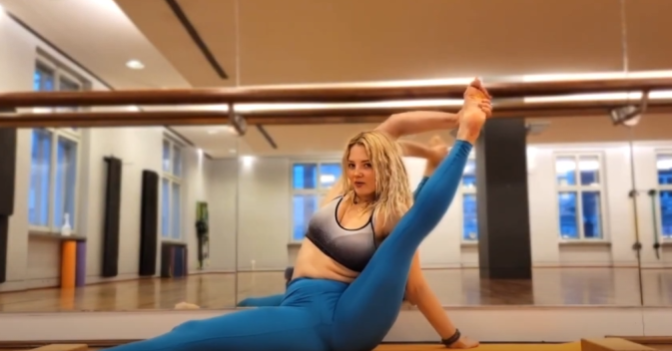
Regular deep leg stretching improves more than physical mobility—it transforms the way you move and feel.
- Improved posture: Lengthened muscles reduce tightness in the hips and lower back.
- Better blood circulation: Deep stretching enhances oxygen flow and joint health.
- Reduced injury risk: Flexible muscles absorb impact and recover faster.
- Enhanced athletic performance: Gymnasts, dancers, and athletes gain greater control and range of motion.
- Mental relaxation: The calm focus of stretching releases stress and tension stored in the body.
Building a Consistent Practice
To achieve splits or oversplits, consistency is your best tool. Practice stretching at least 3–5 times per week, focusing on technique and control rather than speed. Combine active stretching (moving stretches) and passive stretching (held poses) for the best results.
After every session, hydrate and rest. Muscles need time to adapt and recover, just like in strength training. Taking rest days doesn’t slow progress—it sustains it.
The Art of Patience
In contortion and gymnastics, progress often comes millimeter by millimeter. It can take months—or even years—to reach a perfect split, and that’s okay. What matters most is the consistency, mindfulness, and joy you bring to each stretch.
Flexibility is not just a physical journey—it’s emotional. It teaches humility, body awareness, and self-compassion. Every time you stretch your legs, you also stretch your patience, focus, and determination.
So next time you slide into your stretch, take a deep breath. Feel your muscles open, your heartbeat steady, your mind calm. This is the essence of the art: strength meeting softness, control meeting surrender.
With time, practice, and heart, your splits and oversplits will come—not through force, but through trust in your body’s natural rhythm. 💫🧘♀️🤸♀️
